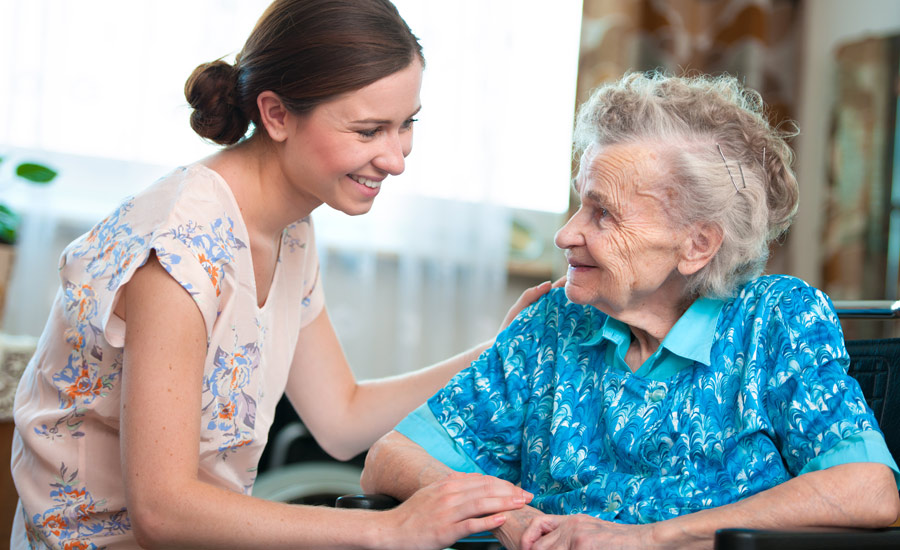The Unsung Heroes – How Volunteers Are Making a Difference in Care Homes

Care homes rely on dedicated staff to provide essential care, but the human touch that makes life meaningful often comes from volunteers. They bring conversation, laughter and companionship, which can transform a resident’s day.
So, how exactly do volunteers contribute to care home life? Let’s explore the many ways they make a real difference.
How Do Volunteers Contribute to Care Home Life?
Volunteers in care homes offer companionship, organise activities and provide practical support that enhances residents’ quality of life. Here’s how they make a difference:
Reducing Loneliness
Volunteers spend time with residents, offering conversation, friendship and emotional support.
Organising Activities
From arts and crafts to music sessions and gentle exercises, they keep residents engaged and active.
Providing Practical Help
They assist with reading, writing and using technology to stay connected with loved ones.
Supporting Staff
By helping with non-medical tasks, they free up care workers to focus on essential duties.
Strengthening Community Ties
Volunteers bring the outside world in, fostering intergenerational connections and leading fundraising or awareness efforts.
Enhancing Emotional Well-Being
Their presence around the care home uplifts spirits and confidence, creating a more positive, social environment for everyone.
In More Detail:
Reducing Loneliness and Social Isolation
Loneliness is a real issue in care homes. Some residents go days without a visitor and others struggle to join in with group activities. Volunteers step in to make sure no one is left feeling isolated.
A chat over a cup of tea, a short walk or just sitting quietly together in a private space can make a big difference. Small moments of connection like these give residents something real to look forward to and feel part of a community again.
Ways volunteers help tackle loneliness:
- Regular visits from someone who shows up, listens and takes an interest.
- Encouraging residents to join in with games, music and events.
- Emotional support from a friendly conversation or a reassuring presence.
- Keeping residents connected by helping them stay in touch with family and friends.
Organising Activities and Entertainment
A slow day can feel endless in a care home, but volunteers shake things up, bring in fresh energy and make life more enjoyable. They help turn a regular afternoon into something worth talking about – whether that’s a creative workshop, a competitive quiz or a singalong that gets everyone smiling.
Here are some ways volunteers keep things lively:
- Painting, knitting or making decorations for special occasions.
- Live performances, karaoke or just playing old favourites that bring back memories.
- Bingo, board games or a pub-style trivia night.
- Looking through old photos, sharing life stories and sparking meaningful conversations.
- Gentle exercise classes, light stretching or even a bit of dancing are also available.
A Helping Hand When It’s Needed Most
Care home staff have a lot to juggle throughout the day and sometimes residents just need a bit of extra help with the small things. Volunteers step in to make everyday life easier, whether that’s guiding someone through a video call, reading a letter aloud or offering a steady hand at mealtimes. These little moments of support can make a big difference in helping residents feel more independent and connected.
Ways volunteers help in a practical way:
- Helping residents eat comfortably and making dining a more social experience.
- Reading books, letters or newspapers and assisting with written communication.
- Teaching residents how to use phones, tablets or video calls to stay in touch with family.
- Helping organise belongings, fetch essentials or assist with small day-to-day needs.
Lightening the Load for Staff and Families
Carers work flat out and sometimes there’s not enough time in the day to give every resident the one-on-one attention they’d like. Volunteers step in to help and with that extra support, staff can focus on the medical side of care, knowing residents are still getting plenty of social interaction.
Families appreciate it too. It’s not always possible to visit as often as they’d like and it’s actually reassuring to know their loved one has company.
Some ways volunteers support staff and families:
- Spending time with residents so they always have someone to talk to.
- Helping with visits so family members feel welcome and comfortable.
- Setting up video calls or passing on messages to keep families connected.
- Running activities and helping out with everyday tasks to take pressure off staff.
Keeping Residents Connected to the Community
Living in a care home doesn’t mean losing touch with the outside world. Volunteers help bring in fresh faces, new conversations and a sense of connection that keeps residents feeling part of something bigger.
Local schools and youth groups often visit, giving residents the chance to share stories and build bonds across generations. Therapy animals bring comfort, while volunteers organise outings, special events and fundraising efforts to improve facilities. It’s all about making sure life inside the care home feels just as successful and connected as life outside.
Some ways volunteers strengthen community ties:
- Intergenerational visits from Schools and youth groups who spend time with residents.
- Pet therapy with friendly animals providing companionship and comfort.
- Fundraising & awareness to improve facilities and create better experiences.
- Outdoor activities like trips to parks, markets or community events.
The Lasting Impact of Volunteers
A care home feels different when volunteers are part of it. They bring fresh energy, real friendships and a sense of connection that sticks around long after they’ve left for the day. A regular visitor, a group activity or just having someone to talk to makes life richer and more enjoyable for residents.
When volunteers get involved, others take notice – local groups offer support and the whole place feels more social and welcoming. Their presence makes a lasting difference, shaping a care home into a community, not just a place to live.
How volunteers leave their mark:
- Stronger friendships where familiar faces bring comfort and trust.
- A better atmosphere with more social interaction makes a place feel alive.
- More community involvement, encouraging others to see the impact and step up to help.
- A sense of purpose so that residents feel valued, not just cared for.
Ready to explore...
